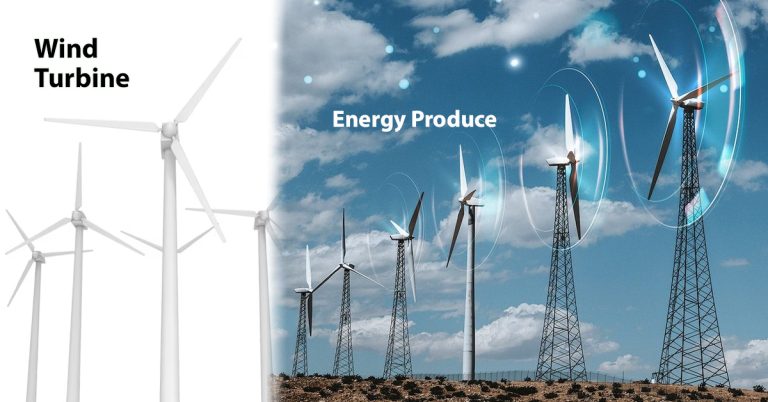Wind energy is now the most vital renewable resource, providing electricity to millions of homes and businesses globally. It accounts for 8% of global electricity generation. Countries around the world are trying to scale up this percentage.
One of the most common questions people ask is “How much energy does a wind turbine produce?” The answer depends on different factors, but in this blog, we will explore some important elements that affect power generation and how a turbine converts wind into usable energy.
30-Second Summary
Wind energy continues to power millions of houses worldwide with the help of turbines. In this guide, we answer the most common question, “How much energy does a wind turbine produce?”
From the fundamentals of a wind turbine and its average energy output to factors, energy produced in one rotation, and future trends, learn everything in this detailed blog.
The Fundamentals of Wind Turbines

A wind turbine harnesses the wind power and transforms it into electricity. Its three main components are
- Nacelle
- Rotor Blades
- Tower
The rotor blades capture the wind, rotate, and generate electricity through a generator. The electricity a turbine generates depends on the following factors.
- Dimensions of the turbine
- Speed of the wind
- Design efficiency of the turbine
They collaborate to control energy generation from each rotation.
Average Wind Turbine Energy Output
Right now, the U.S. Turbine Database has more than 70,000 wind turbines. Based on a 42% standard capacity factor, the power generation of the wind turbine is over 843,000 kWh per month.
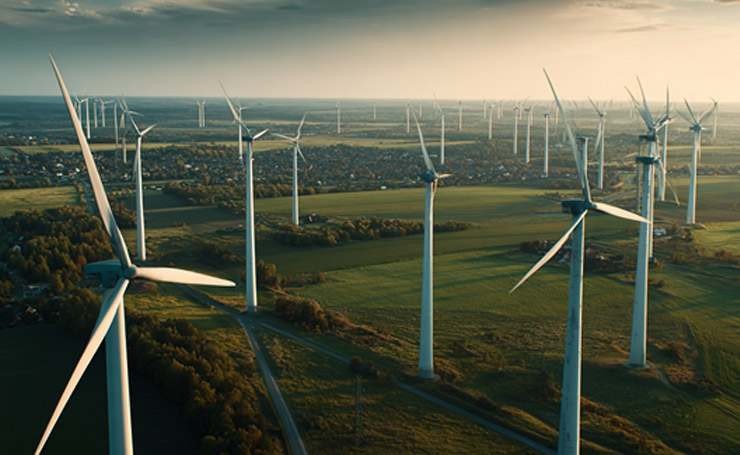
However, there is no set answer to how much energy a turbine produces, as the output depends on the type and location of the turbine.
The two major types of turbines are
- Horizontal-axis turbines are highly efficient at generating power, with an output of 26.1 megawatts (MW) per day.
- Vertical-axis turbines are mostly seen in urban areas and are less efficient than horizontal-axis turbines. They produce 230 to 11,300 kWh of electricity, depending on their size.
How Turbines Harness Wind Power
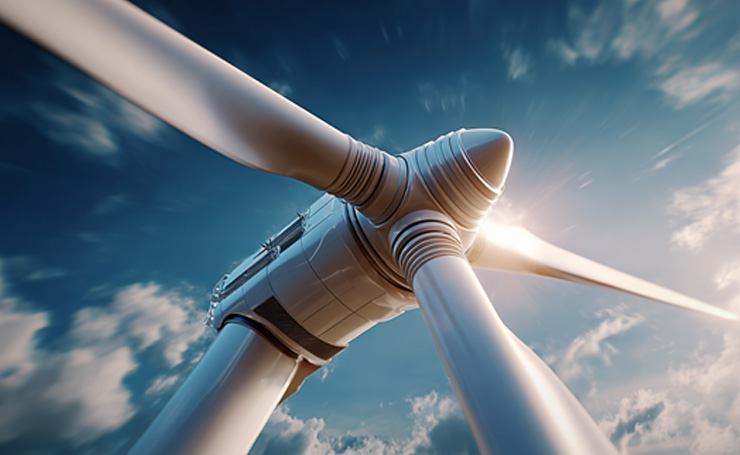
Let’s understand how a turbine uses wind power and transforms it. The following formula is used to calculate the power a wind turbine produces.
P (Power) = 0.5 × ρ × A × v³ × Cp
This formula uses the following elements.
Air Density (ρ): Air density changes with temperature and height. At sea level, it is approximately 1.225 kg/m³.
Swept Area (A): This is the area swept by rotor blades. A bigger blade means more energy from the wind.
Wind speed (v): The power output directly depends on the cube of the velocity (wind speed).
Efficiency (Cp): It represents how efficiently a wind turbine converts wind energy into mechanical energy. It is limited to 59.3% by Betz’s limit.
Power a Turbine Generates in One Rotation
A turbine produces a certain amount of electricity with every rotation. This amount is not the same for every turbine.
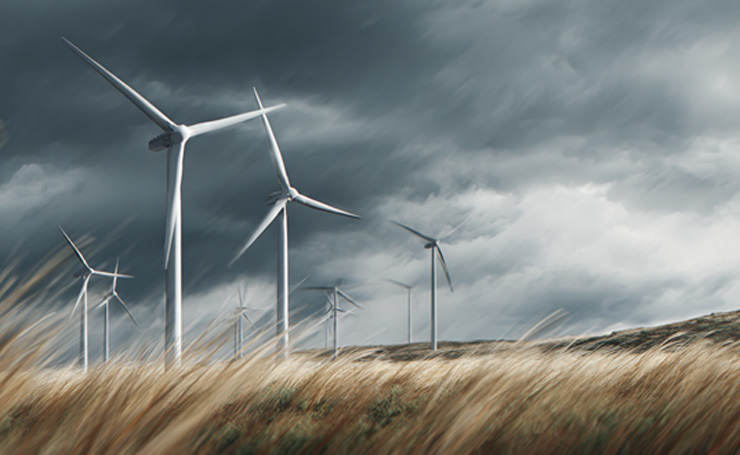
To understand it, let’s have a look at the relationship of total energy with the rotor angular velocity.
Wind Speed and Power Generation
Wind speed directly impacts the power output. Increased wind speeds also raise the power generation. However, turbines can work within certain limits of the wind speed.
These are known as cut-in and cut-out speeds. Most turbines start generating power at the cut-in speed of 3 to 4 m/s (meters per second) and stop working at the cut-out speed of 25 m/s.
Swept Area
More wind energy can be harnessed in a large swept area. Imagine a modern turbine with a rotor diameter of 120 meters, giving it a swept area of 11,310 square meters.
With each rotation, the blades capture the wind from this vast area and turn its kinetic energy into mechanical energy to operate the generator.
One of the modern solutions to optimize energy capture is to increase blade length and create more efficient designs.
Rotational Speed and Power Generation
Large turbines usually rotate more slowly, around 10 to 20 rpm, while smaller ones can easily reach 60 rpm or more. Even though they spin slower, their blades cover a large area, capturing more wind energy with each rotation.
A turbine’s energy cannot be measured on a single rotation because it keeps changing. Therefore, an average energy rate over time is calculated to see how much energy it can deliver overall.
Factors Affecting Energy Production
Have a look at the factors that change the energy generation of a wind turbine the most.
Natural Factors

Wind Speed: Power output increases with the cube of the wind speed, meaning a small increase in the wind significantly raises power generation. For example, when the wind doubles in speed, the power generation increases by eight times.
Air Density: Air density impacts the amount of force the wind can apply to the turbine’s blades. Cold and dense air has more mass and results in more energy than warm and thin air.
Hub Height: A tall turbine gets more consistent wind pressure, as there is less friction from the ground. This is why the utility-scale turbines are placed on towers more than 100 meters in height.
Design Factors
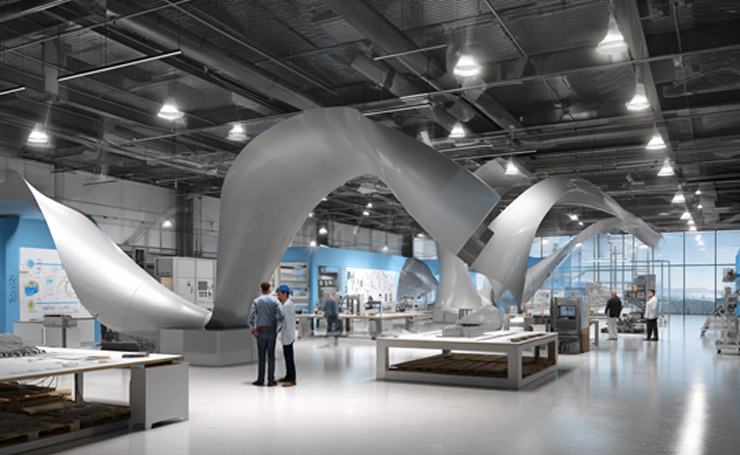
Turbine Efficiency: The power coefficient measures how efficiently a turbine transforms wind energy into mechanical energy. While the Betz limit is 59.3%, most turbines function at 35 to 45%, depending on their size and design.
Rotor Swept Area: The circular area covered by the blades directly impacts how much wind energy is captured. Larger blades gather more kinetic energy by sweeping a vast area.
Operational Factors

System Losses: Not all captured energy goes to the grid. Some of it is lost in the gearbox, generator, and other electrical components. Some additional losses occur due to changing temperature, wake turbulence, and maintenance downtime.
Grid Integration and Curtailment: Sometimes, when the grid cannot fully absorb the energy, the turbine is curtailed, meaning it is intentionally slowed or stopped. It results in the loss of potential energy output.
Siting and Wake Effects: Turbines in a wind farm can block the wind for those behind them (wake effect). Engineers place turbines usually 5 to 10 diameters apart, to ensure each gets full access to undisturbed airflow.
Onshore vs Offshore Turbine Wind Capacity
Wind turbine capacity changes depending on many factors, as we discussed above. However, a modern wind turbine capacity output is 6 million kWh of electricity every year, which is enough to power 1500 houses.

Offshore turbines are more efficient as they are large, located at sea, and get fewer external disturbances like birds and trees. They have a capacity of 4 to 15 MW and produce 8 to 10 MW of electricity, enough to power 3000 to 4000 houses.
Offshore turbines typically run at 35 to 50% capacity, while onshore turbines have a lower capacity of 25 to 35%. A high capacity factor results in more reliable and consistent energy production.
Number of Houses a Wind Turbine Powers

The wind turbine output per year in the U.S. is around 434 billion kilowatt-hours (kWh). It takes about an average of 26 kWh of electricity to power a house each day.
Based on it, utility-scale turbines produce enough energy for 46 million houses. Individual turbines can power around 300 to 600 houses each.
Wind Energy is Growing
As per American Clean Power, wind is the leading renewable source and covers 10% of electricity production. The wind energy sector will grow significantly, and in the next decade, wind turbine technicians will be the most sought-after job role.
It is also estimated that with the growth of wind power, we can prevent 340 million metric tons of carbon dioxide emissions annually.
Future Trends to Increase Energy Production
- The wind energy sector is now moving toward larger rotors and higher hubs to increase the amount of energy produced significantly by each turbine.
- Another advancement is floating offshore turbines, where wind turbines can be installed in deep water locations.
- Different digital innovations, such as advanced control systems and sensors, are increasing the reliability and efficiency of wind turbines.
Wrapping It Up
Different digital innovations, such as smart control systems and advanced sensors, are enhancing the reliability and operational efficiency of turbines. This guide is a comprehensive answer to the question “How much energy does a wind turbine produce?”
More companies are now developing innovative solutions in the wind energy sector. As a result, the newer turbines are better at capturing more wind energy with each rotation. This approach enables a cleaner environment with less dependency on fossil fuels.
Want to learn more about wind energy and its impact? Explore Green Energy Insights for the latest information.
FAQs
How much Electricity does One Wind Turbine Make in One Day?
A modern onshore wind turbine can produce around 8,000 to 12,000 kWh per day, depending on location, turbine size, and wind speed. Offshore turbines can generate more energy due to stronger and consistent winds.
How does Wind Speed Impact Energy Generation?
Wind speed is considered the main factor that influences energy generation. When the wind speed doubles, it increases the power generation upto 8 times.
What is the Average Capacity of a Modern Wind Turbine?
The majority of the utility-scale turbines have a capacity of 2 to 5 MW. The newer offshore models exceed 10 MW or more, generating enough electricity to power thousands of homes.

